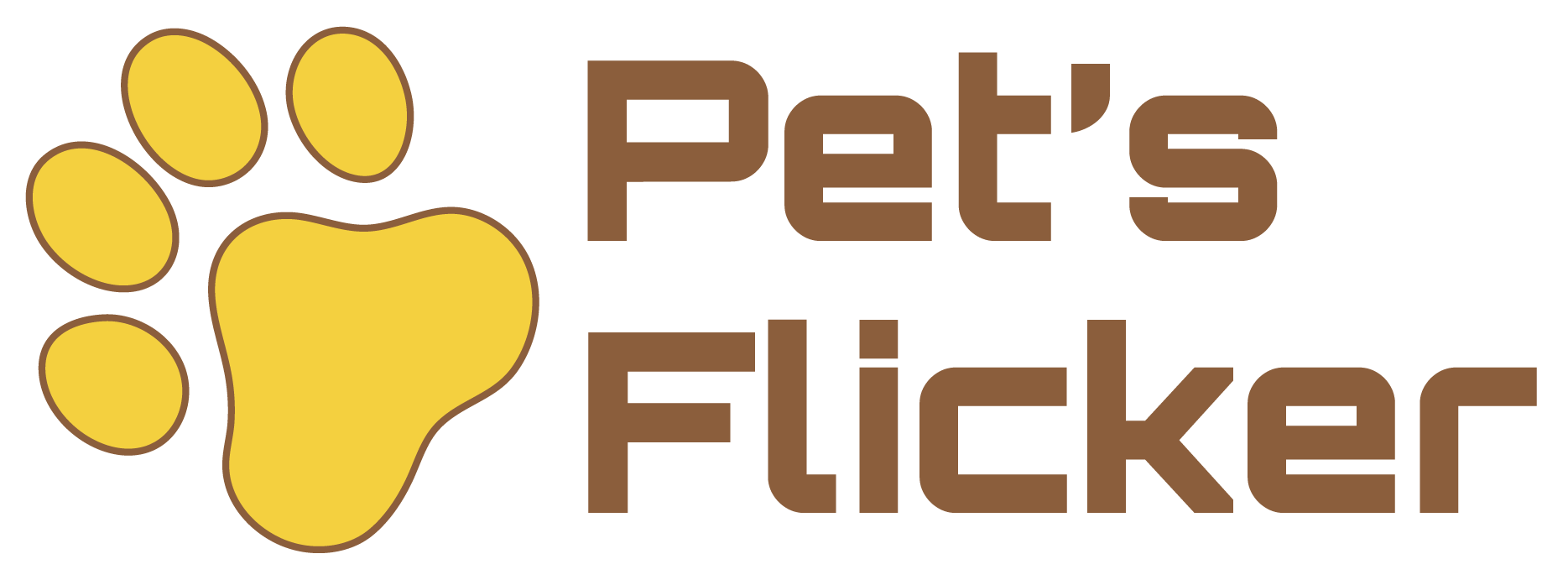10 Best Mental Exercises for Dogs to Boost Cognitive Health and Focus
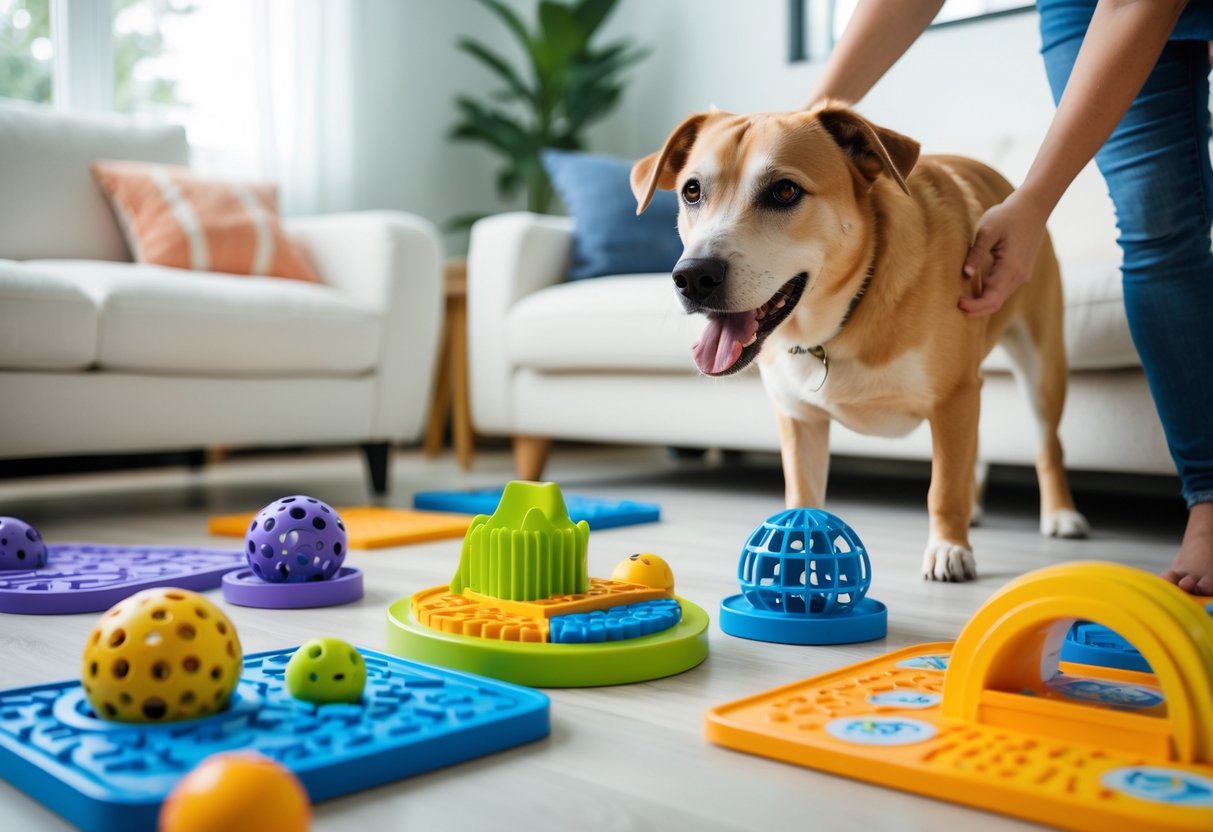
Dogs need more than just physical exercise to stay healthy and happy. Mental exercises help keep their minds sharp and prevent boredom, which can lead to unwanted behaviors.
The best mental exercises improve a dog’s focus, reduce anxiety, and strengthen the bond between the dog and its owner. Providing mental challenges is an important part of caring for a dog’s overall well-being.
1) Food Puzzle Toys
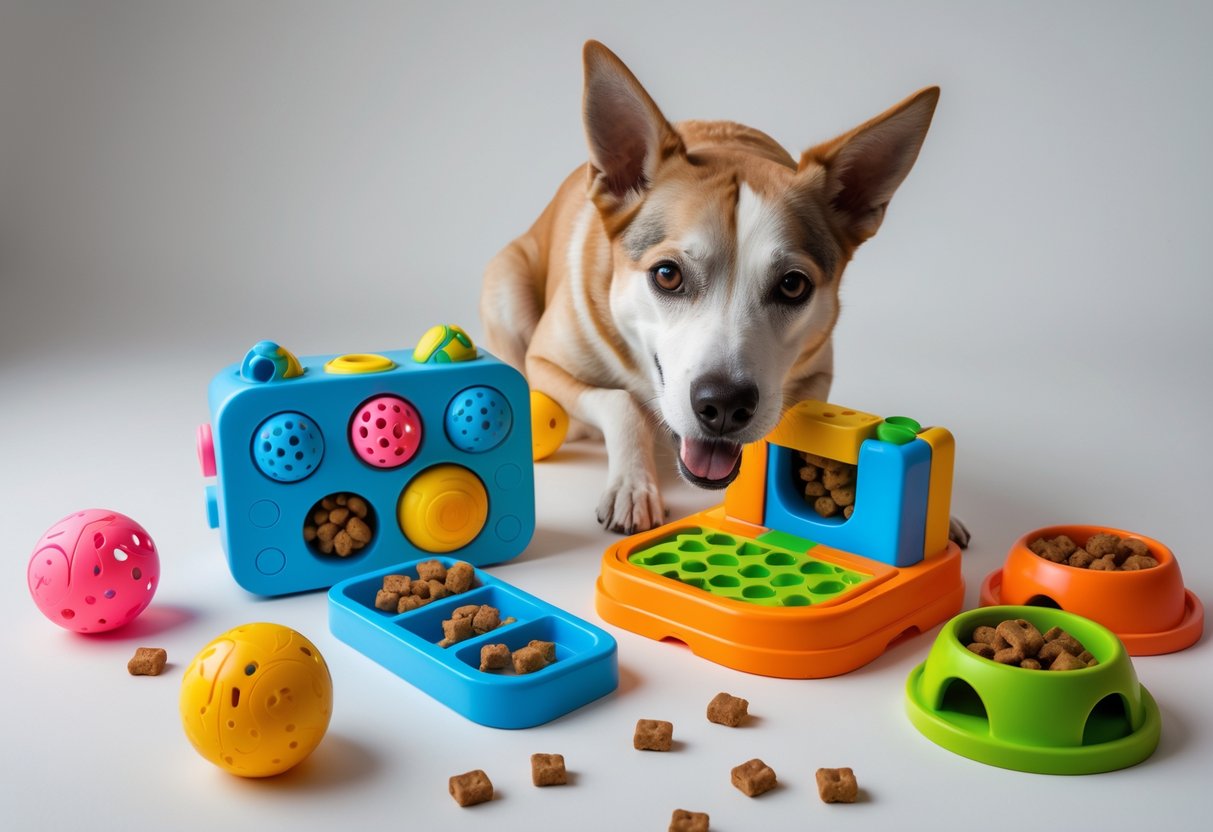
Food puzzle toys make dogs use their brains to get treats or meals. They slow down fast eaters and keep mealtimes interesting.
These toys help stimulate a dog’s mind by encouraging problem-solving and nose work. They come in many shapes and sizes to match different skill levels.
Using food puzzles can also reduce boredom and improve a dog’s focus. They are a simple way to add mental exercise during feeding.
2) Hide and Seek Games
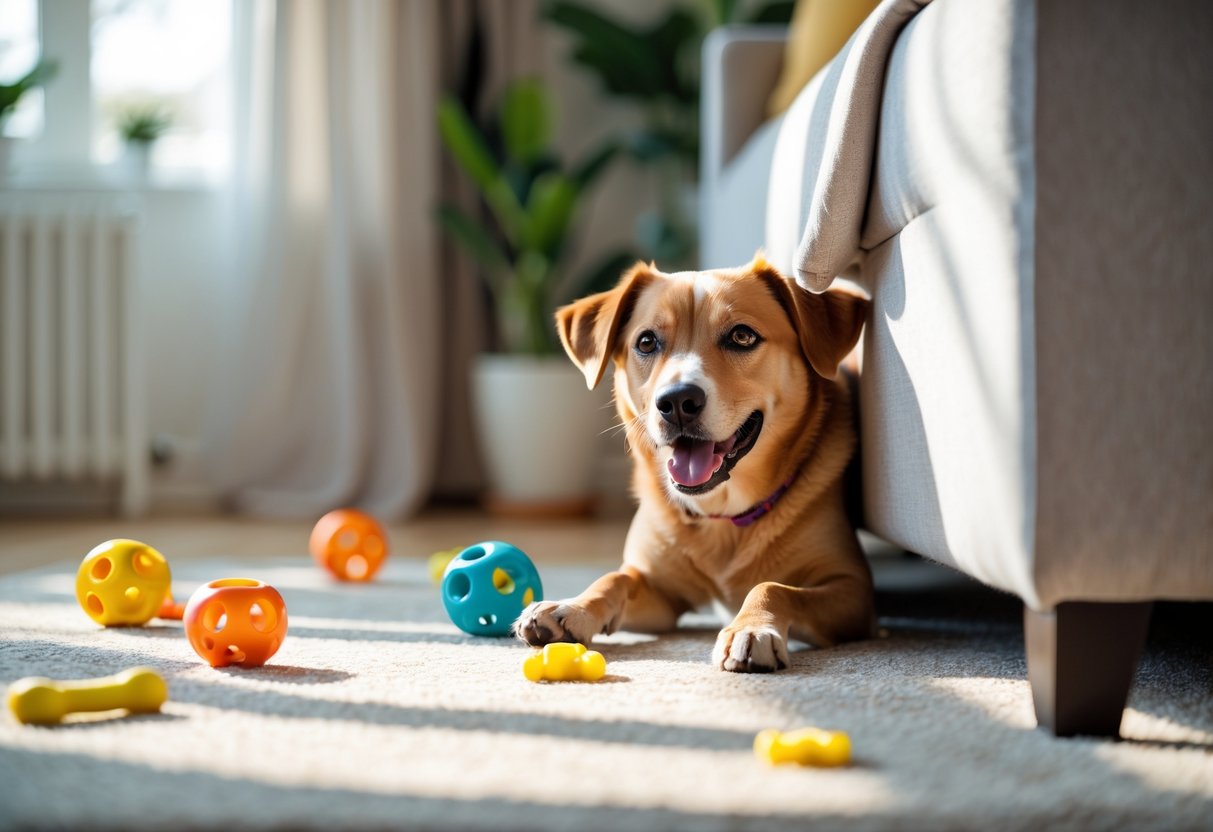
Hide and seek is a simple game that helps dogs use their problem-solving skills and sense of smell. One person hides while another holds the dog. Then, the dog is called to find the hidden person.
This game can start easy and get harder by choosing less obvious hiding spots. It keeps dogs mentally active and helps improve their focus and obedience.
3) Scent Tracking Exercises
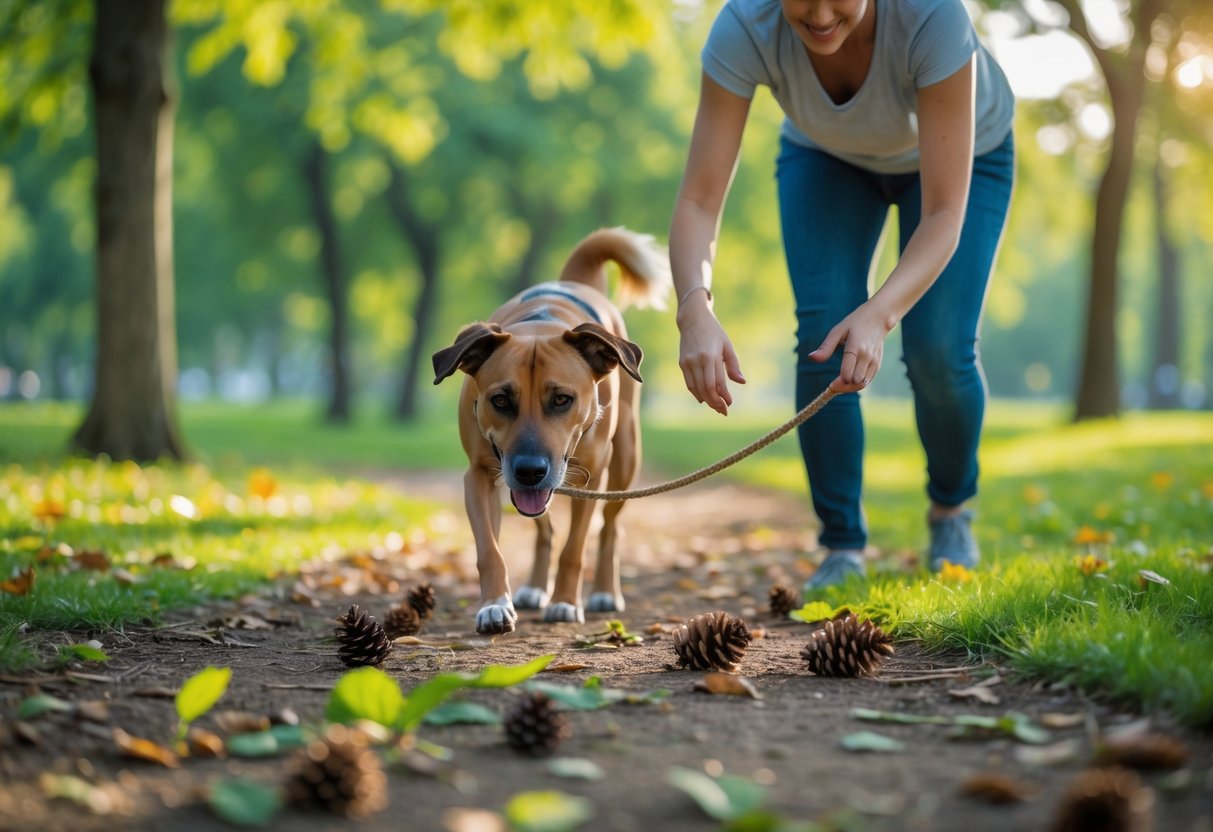
Scent tracking uses a dog’s natural ability to follow smells. It challenges their mind and keeps them focused.
These exercises help prevent boredom by giving dogs a task to solve.
Tracking also provides mild physical activity, like walking or sniffing around.
Working on scent exercises can build confidence and strengthen the bond between dog and owner.
4) Basic Obedience Training
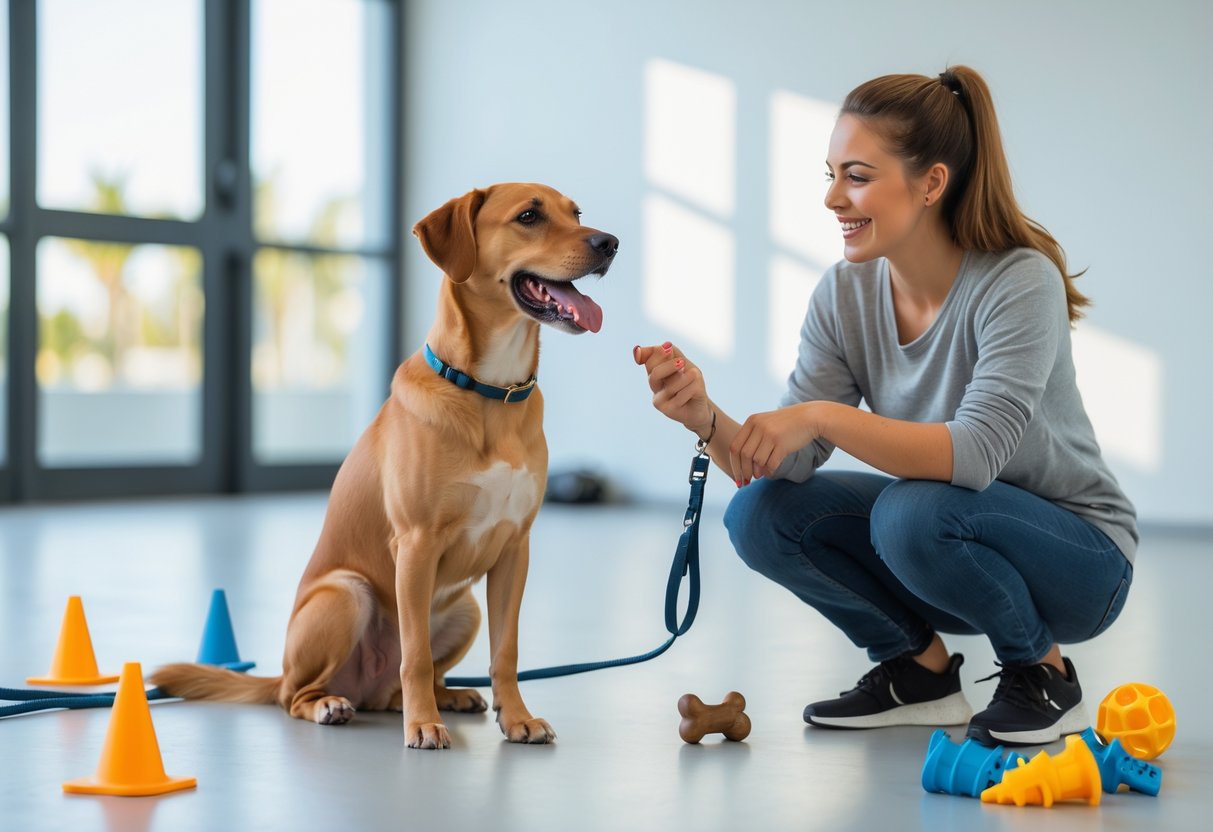
Basic obedience training helps dogs learn important commands like “sit,” “stay,” and “come.” These exercises challenge their minds and build focus.
Consistent practice strengthens the bond between dogs and owners. It also creates good habits that improve behavior over time.
Using positive reinforcement, like treats or praise, encourages dogs to repeat desired actions. This type of training supports mental growth and social skills.
5) Interactive Treat Dispensers
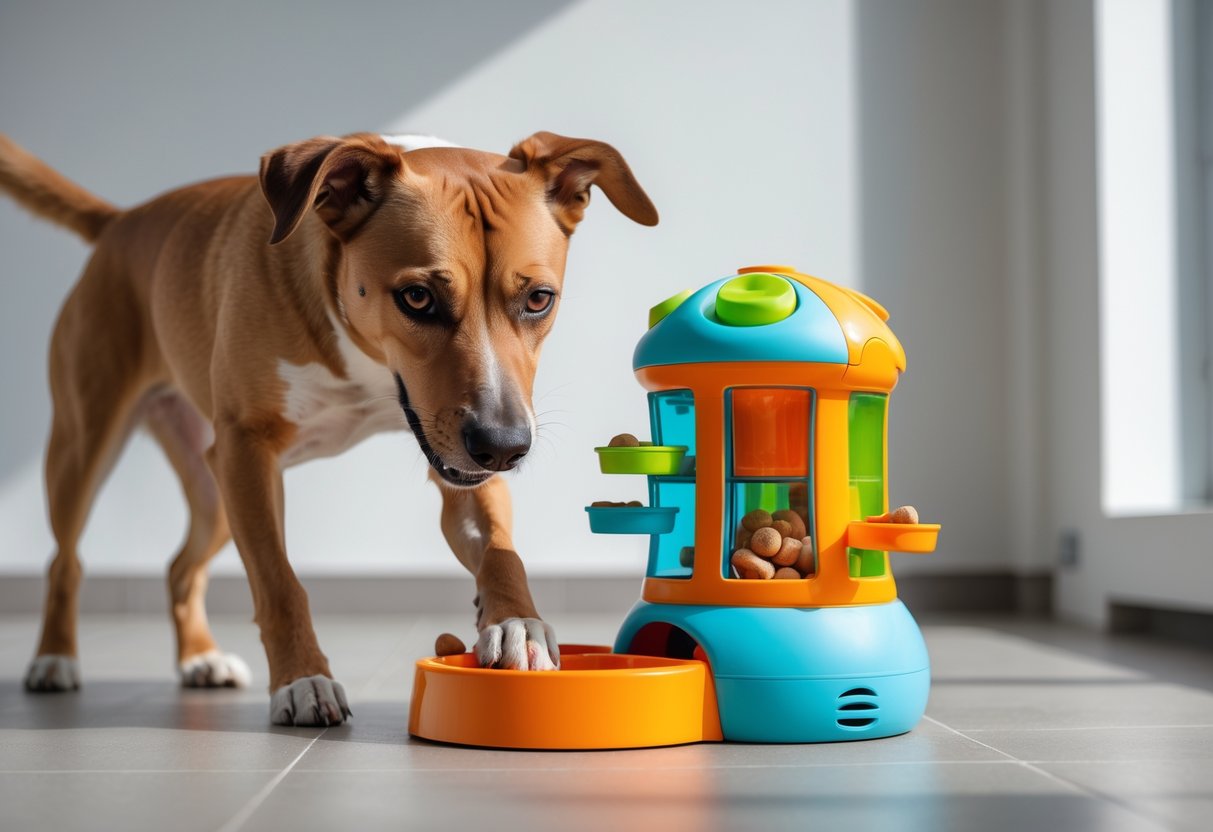
Interactive treat dispensers make dogs work to get their food or treats. They help keep a dog’s mind busy while rewarding them.
These toys encourage problem-solving and can slow down fast eaters. They also provide mental exercise, which is important for a dog’s overall health.
Many come in different shapes and difficulty levels, so owners can find the right fit for their dog’s size and skill.
6) Name That Toy Game
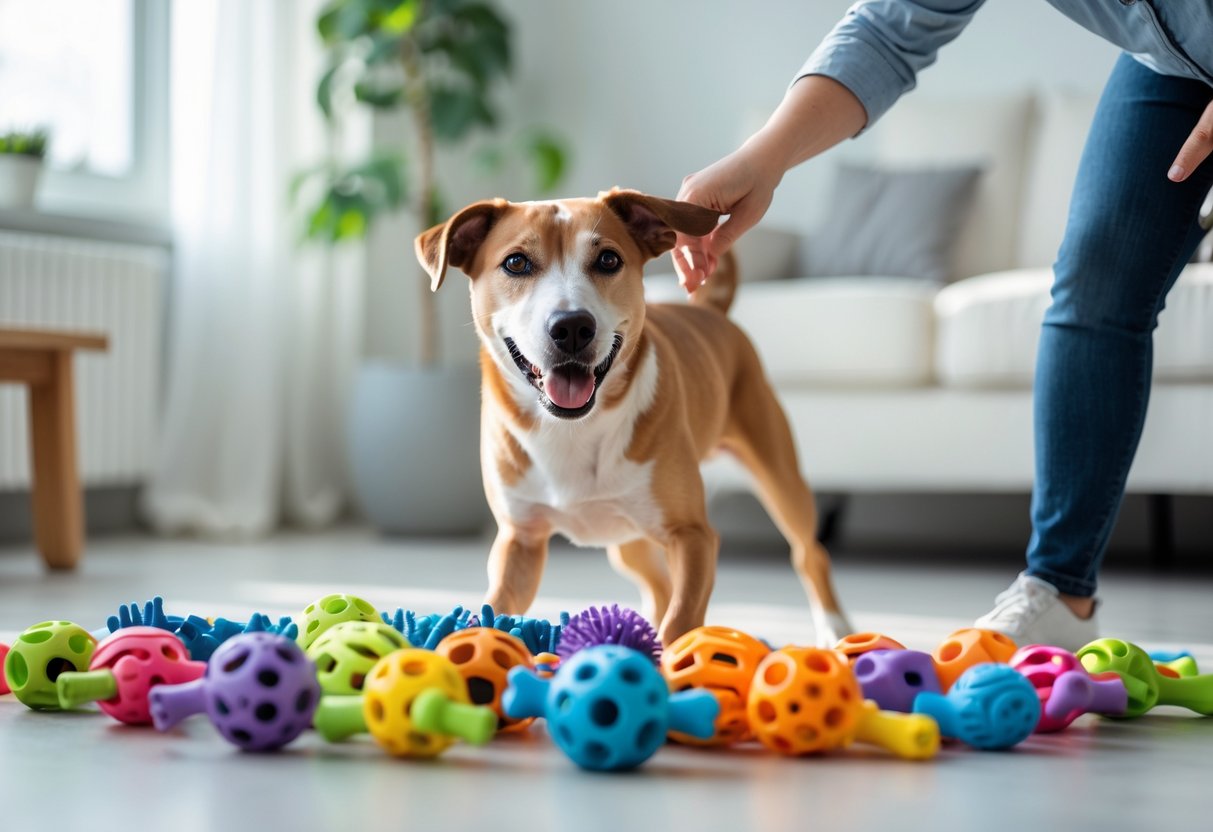
This game helps dogs learn to recognize different toys by name. The owner picks one toy and says its name clearly.
The dog is encouraged to find the correct toy from a group. This strengthens memory and listening skills.
It also builds the bond between the dog and owner through focused interaction. Repeating the game regularly improves the dog’s ability to follow commands.
7) Shell Game with Cups
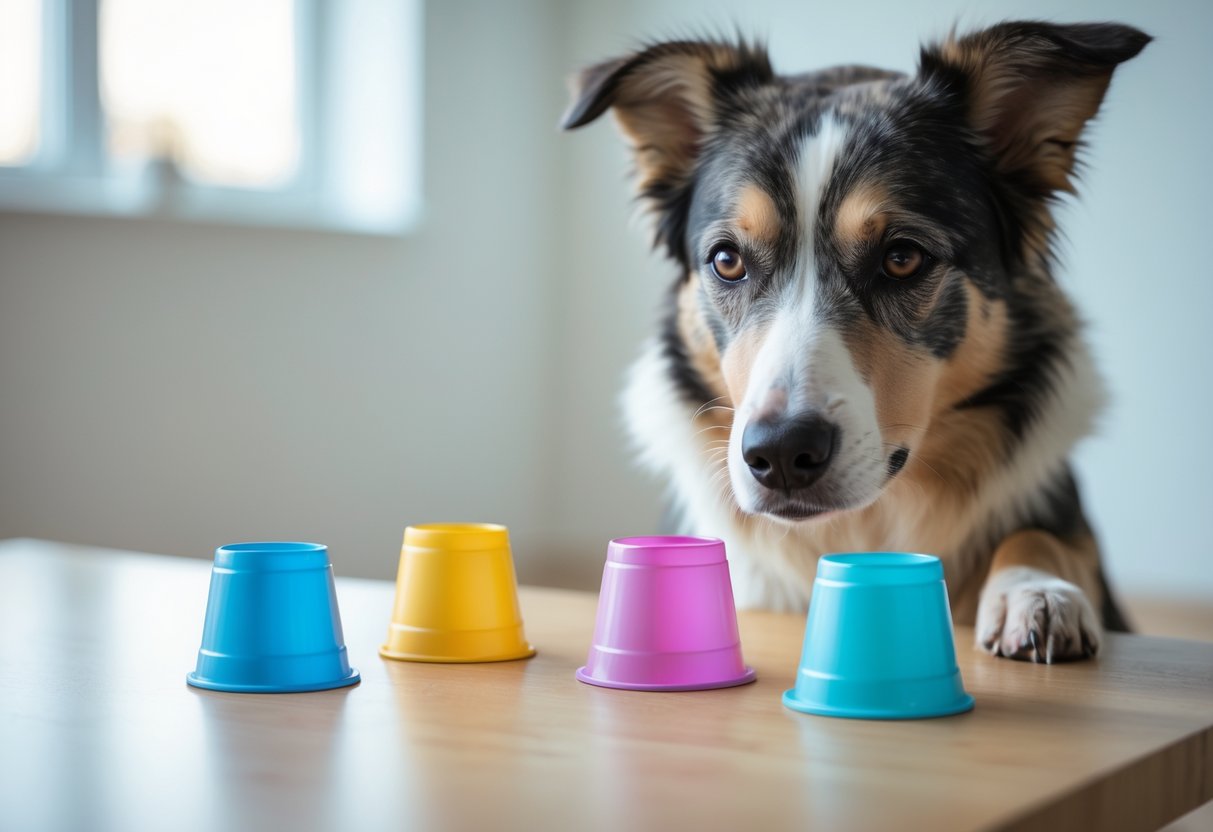
The shell game with cups is a simple way to challenge a dog’s mind. The owner hides a treat under one of three cups and then moves them around. The dog must use its sense of smell and memory to find the treat.
This game helps improve focus and problem-solving skills. It also gives dogs mental stimulation, which is important for their overall well-being. Only a few items are needed to play, making it an easy exercise for any dog.
8) Clicker Training
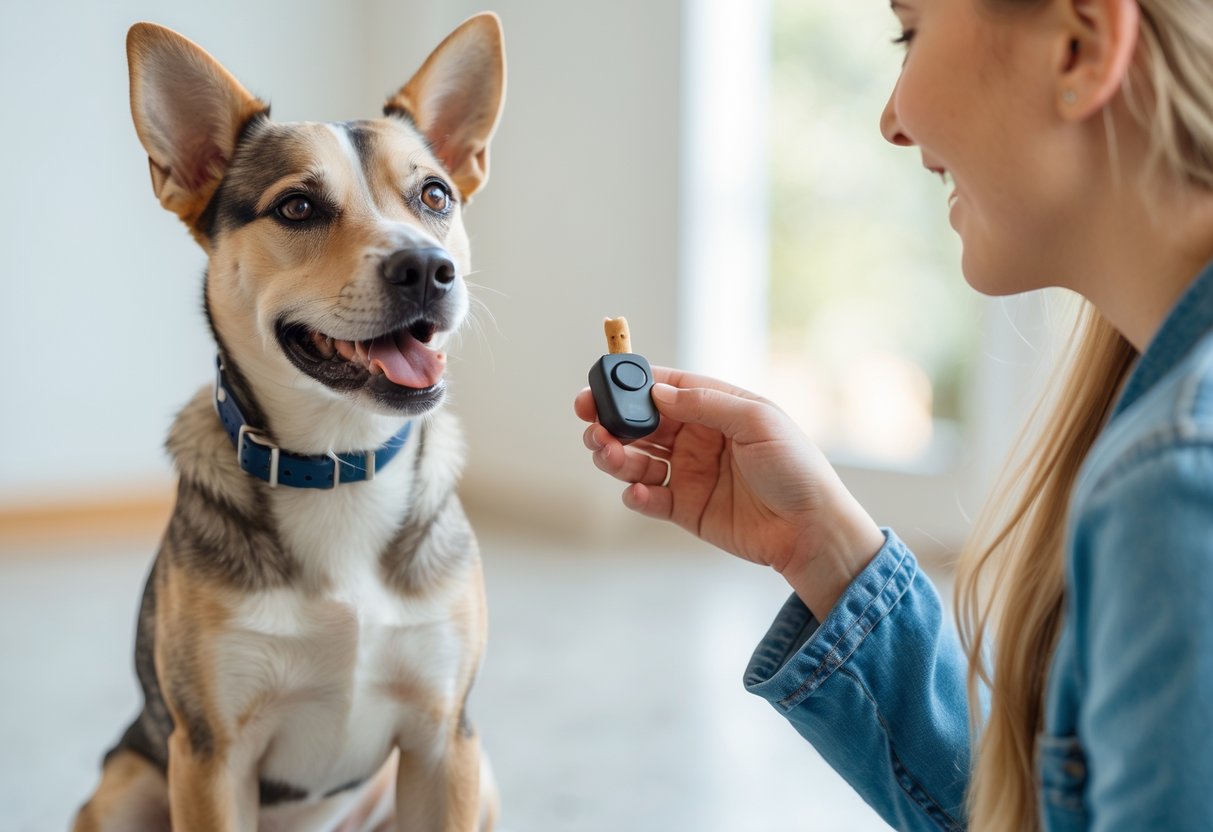
Clicker training uses a small device that makes a clicking sound to mark the exact moment a dog performs a desired behavior. This helps the dog understand what action is being rewarded.
It relies on positive reinforcement to teach new skills. Timing is important so the dog links the click with the right behavior.
This method also provides mental stimulation by keeping the dog engaged and focused during training sessions. It can improve communication between the owner and the dog.
9) Puzzle Feeders
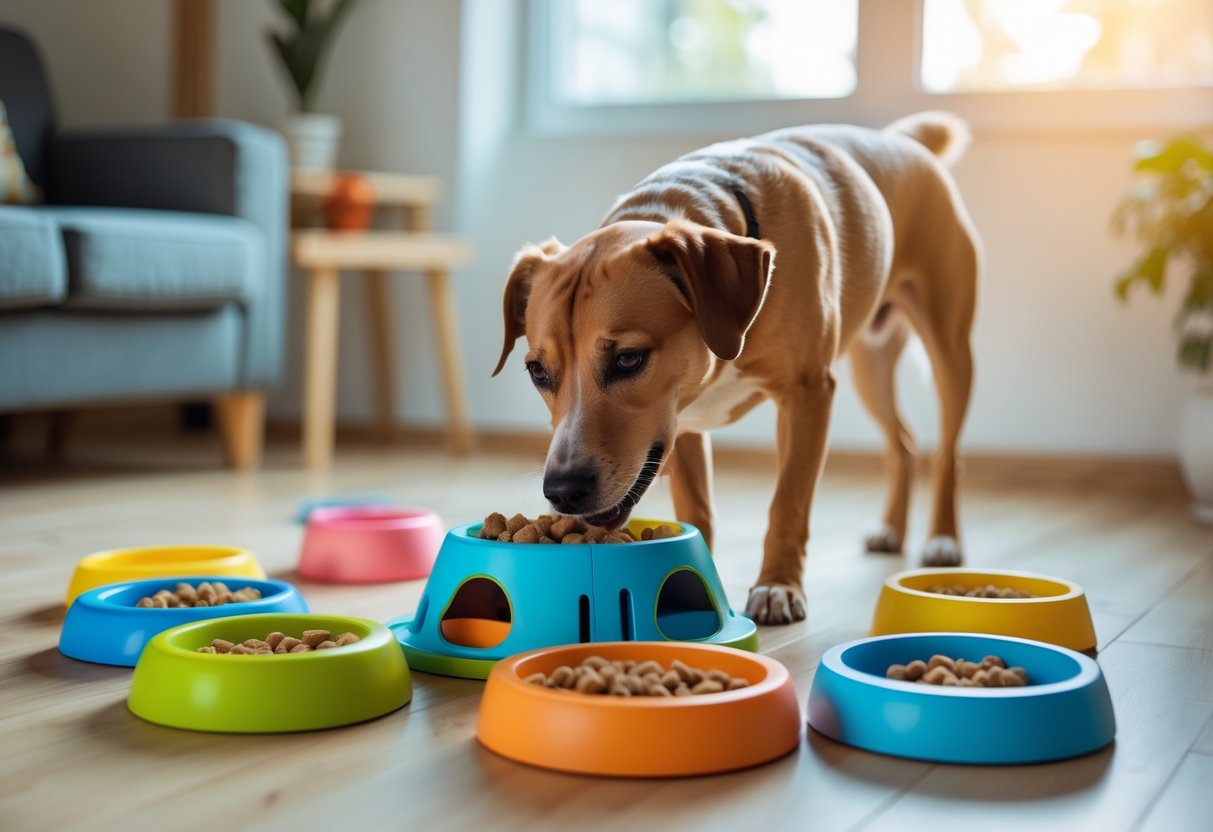
Puzzle feeders make dogs work for their food by using problem-solving skills. They slow down eating, which can help digestion and reduce overeating.
These feeders offer mental stimulation and keep dogs engaged during mealtime. They come in many sizes and difficulty levels to suit different dogs.
Using puzzle feeders can also reduce anxiety and prevent destructive behaviors by providing a positive challenge. They are a helpful part of a dog’s mental exercise routine.
10) Learning New Tricks
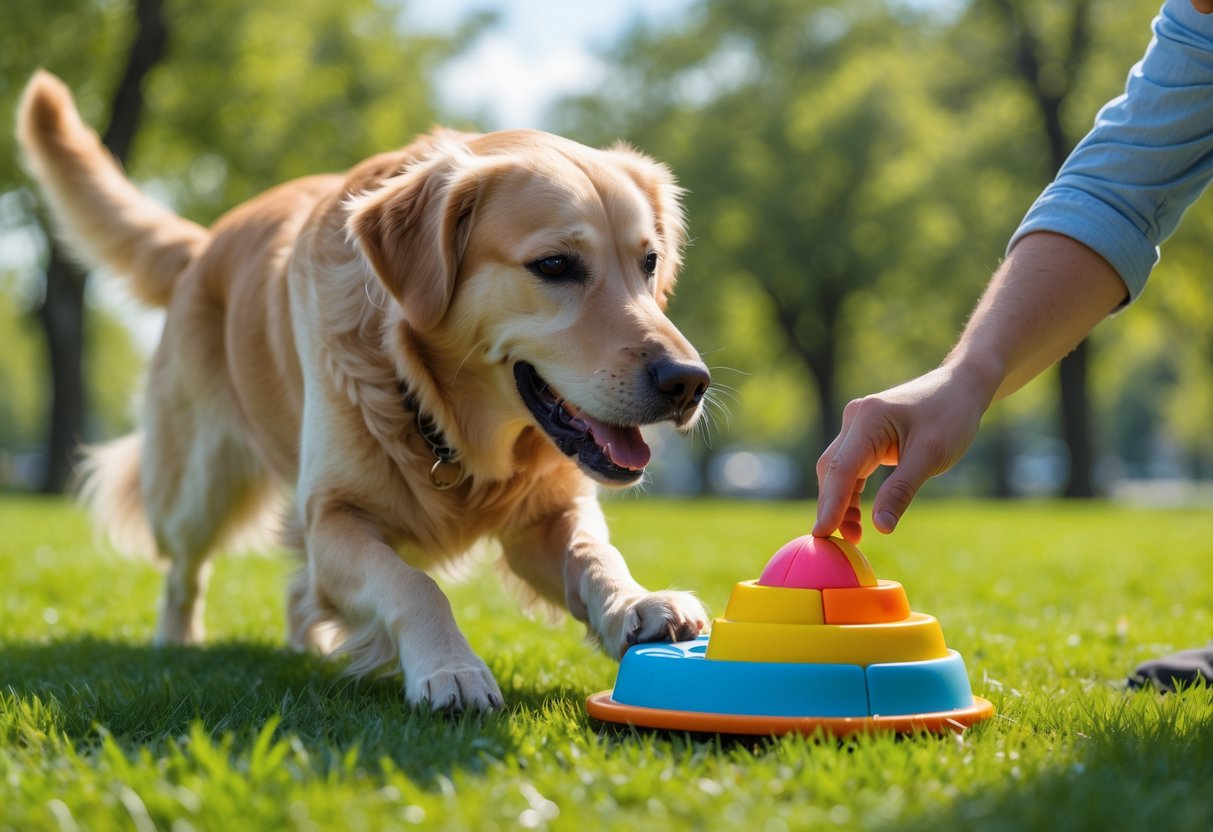
Learning new tricks is a simple way to keep a dog’s mind active. It helps improve focus and builds confidence.
This kind of training also strengthens the bond between the dog and its owner.
Training sessions can be short but consistent, which prevents boredom.
Even older dogs can benefit from learning new commands. It encourages mental stimulation and good behavior.
Why Mental Exercise Is Essential for Dogs
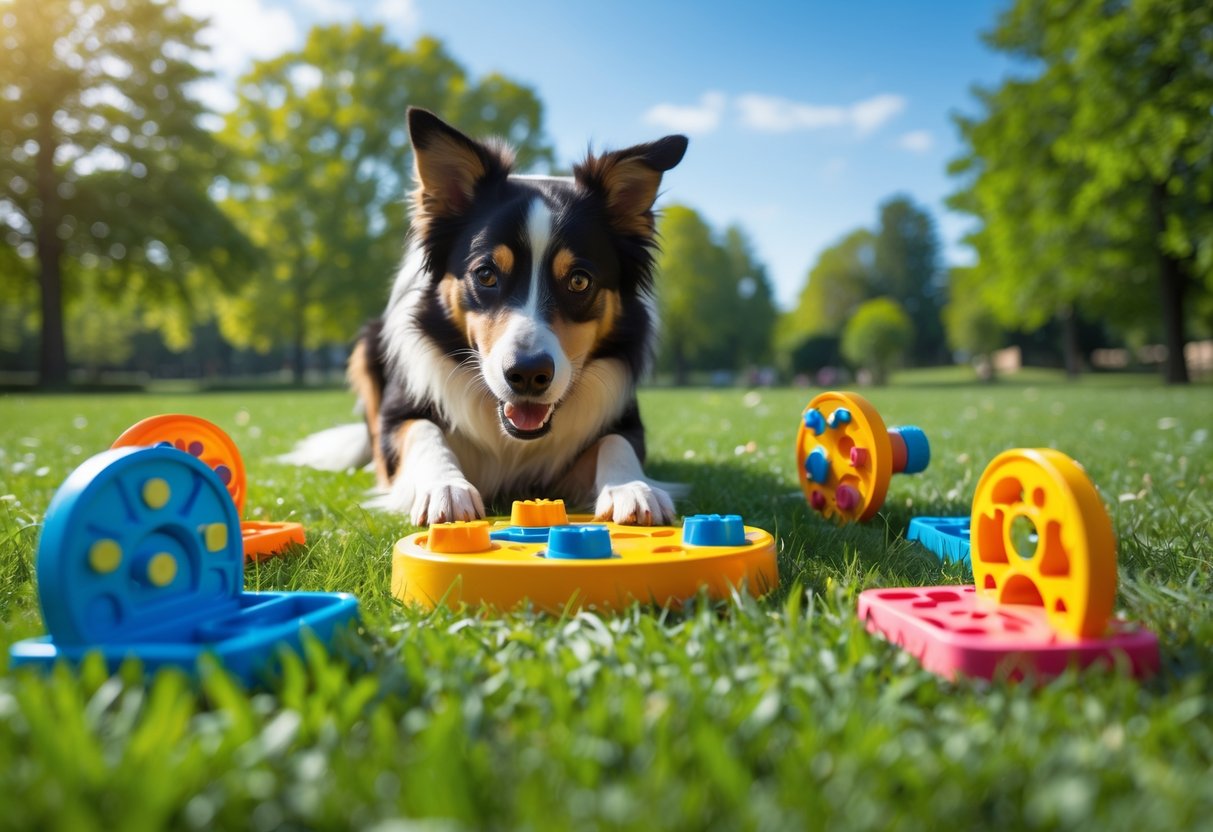
Mental exercise plays a key role in keeping dogs sharp and balanced. It helps stimulate the brain and supports healthy behavior, which are important for their well-being.
Cognitive Development Benefits
Mental exercise improves a dog’s thinking abilities and problem-solving skills. Activities like puzzle toys or scent games encourage them to use their brains, which keeps their minds active.
For young dogs, mental challenges help build learning skills and memory. Older dogs also benefit since mental activity can slow down cognitive decline and keep their brains healthier.
By giving dogs regular mental tasks, owners help develop focus, memory, and adaptability in everyday situations. This can make training easier and improve their ability to respond to new experiences.
Preventing Behavioral Issues
Dogs that don’t get enough mental stimulation may become bored, which can lead to unwanted behaviors like chewing, digging, or excessive barking.
Mental exercise helps reduce stress and frustration by giving dogs a purposeful activity. When dogs are mentally busy, they are less likely to act out or develop anxiety-related habits.
Tasks like obedience training and interactive games can channel a dog’s energy into positive actions. This creates a calmer and more well-behaved pet that fits better into a home environment.
How to Integrate Mental Stimulation Into Daily Routines
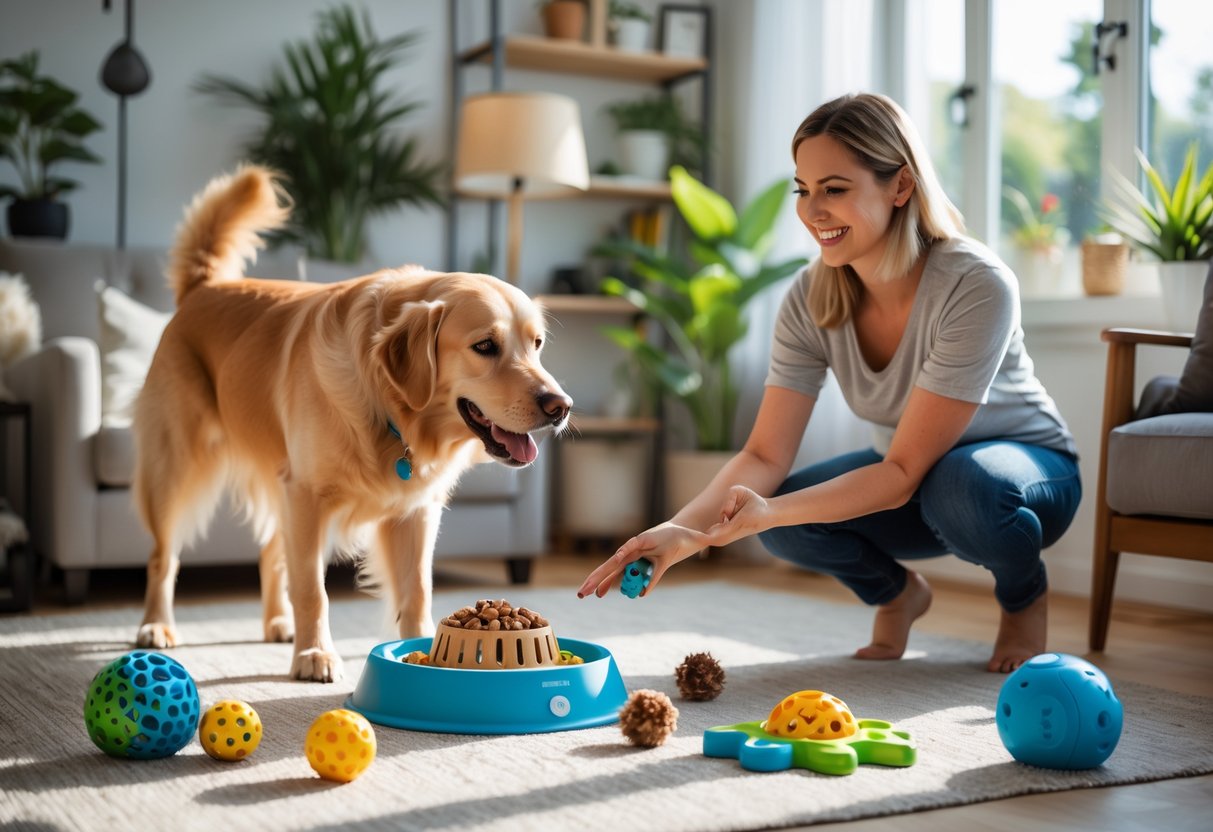
Adding mental exercises for dogs does not require a complete schedule overhaul. Small changes during daily activities can bring consistent mental challenges. Using simple tools and ideas, owners can easily mix mental tasks into everyday moments.
Tips for Busy Owners
Busy owners can use short, focused training sessions to provide mental stimulation. Even five minutes of teaching a new command or trick can engage a dog’s mind. Using puzzle toys or treat-dispensing toys during feeding time turns eating into a brain workout.
Interactive toys left out during the day encourage problem-solving when the owner is not available. Breaking training into multiple short sessions makes it easier to fit into a packed schedule. Walking time can be used for scent games, like hiding treats along the route for the dog to find.
Pairing Physical and Mental Activities
Combining physical exercise with mental tasks improves overall engagement for dogs. For example, during a walk, stopping for quick obedience training challenges the dog’s focus. Another option is to play fetch with added commands, such as “sit” before throwing the ball.
Using interactive toys after exercise allows the dog to calm down while staying alert. This pairing makes physical activity more interesting and mentally rewarding. Alternating between puzzle toys and play sessions helps maintain a balanced routine that stimulates both body and mind.
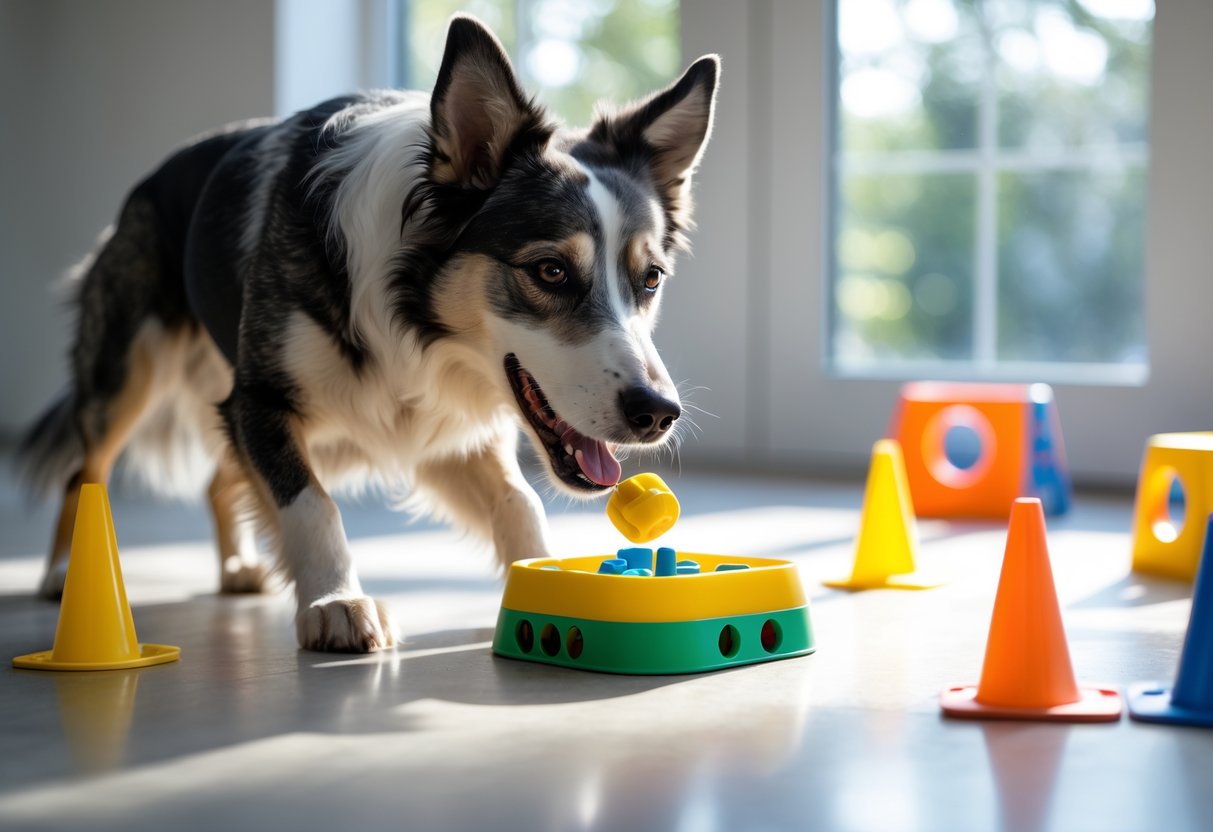
Frequently Asked Questions
Mental exercises for dogs include a variety of games and activities that challenge their thinking, problem-solving, and focus. These exercises can use puzzles, scent work, training commands, and interactive toys to keep dogs alert and calm throughout the day.
